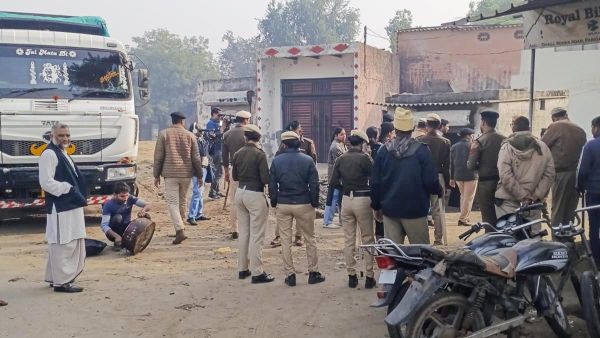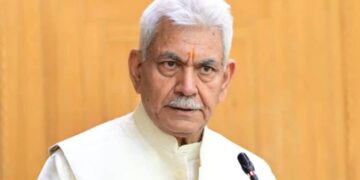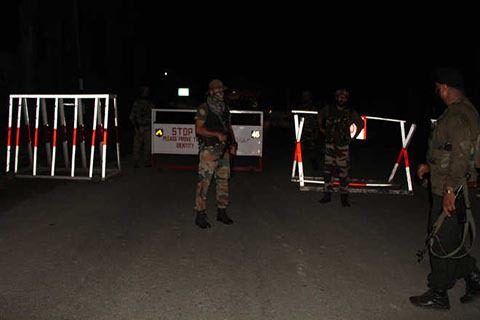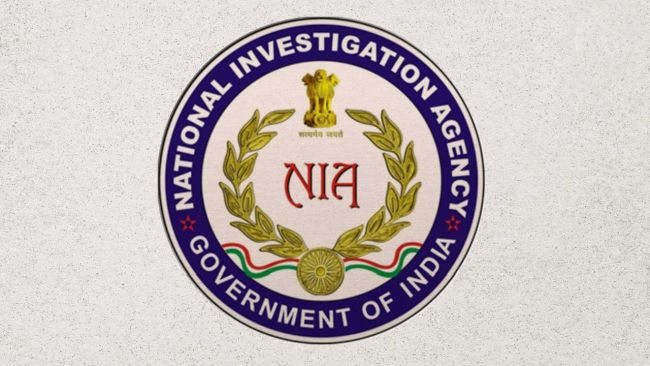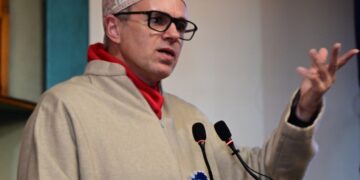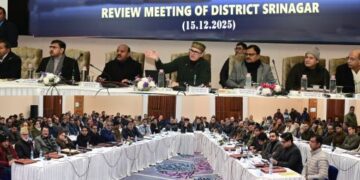New Delhi/Srinagar: The atmosphere in the police interrogation room at Srinagar is tense but a Haryana preacher detained in connection with a ‘white-collar’ terror module remains focused on unpaid rent from arrested doctors.
Maulvi Ishtiyaq, the religious preacher from Mewat in Haryana, was picked up by Jammu and Kashmir Police after the recovery of 2,500 kg of explosive material, including ammonium nitrate, potassium chlorate, and sulphur, from his rented residence located outside Faridabad’s Al Falah University, which has emerged as the “epicentre of the terror module”.
His name surfaced during the interrogation of Dr Muzammil Ganaie, a key member of the “white-collar terror module” arrested from the university. At his instance, the police team recovered explosives from the residence of the preacher.
This “white-collar module” was busted on November 10 after an intense investigation by Srinagar police and led to the arrest of eight persons, including three doctors. But one, Dr Umar-un-Nabi, had managed to give a slip and was driving the explosive-laden car that blasted outside Red Fort, killing 15 people on November 10.
Maulvi Ishtiyaq told his interrogators a shockingly different story, claiming that Ganaie and Umar approached him earlier this year, asking him to store what they called “fertilisers” at his home and allegedly agreed upon a monthly storage fee of Rs 2,500, according to officials.
Maulvi Ishtiyaq was not concerned about the gravity of the situation and his concern was about the outstanding rent owed by Ganaie and Umar which was pending for the last six months, they said.
Living below the poverty line and struggling to support his four children and family, the religious preacher told the officials of the National Investigation Agency (NIA), Srinagar Police and others from central security agencies to recover the outstanding rent from Ganaie so that he could send the money back home.
The officials recalled that the disparity between the heinous crime of storing enough material for a massive terror attack and the detainee’s immediate, desperate concern for the rent payment was enough to briefly break the tension in the interrogation room.
The incident provides a bizarre and tragicomic look into the lives entangled on the fringes of major terror plots, said a senior police official.
His story was supported by Ganaie during interrogation, the officials said, adding Maulvi Ishtiyaq has been handed over to the State Investigation Agency (SIA) for further action.
The preacher was detained on November 12 after a series of raids conducted by Jammu and Kashmir Police along with their Haryana counterparts.
Jammu and Kashmir Police on November 10 along with their counterparts in Haryana and Uttar Pradesh carried out the operation to unravel a “white-collar terror network of banned Jaish-e-Mohammed (JeM) and Ansar Ghazwat-ul-Hind” and arrested eight people.
Investigations led to the Al Falah University where 2,900 kg of explosives was recovered.
It all started on the intervening night of October 18-19, when posters of the banned JeM surfaced on walls just outside Srinagar city. The posters warned of attacks on police and security forces in the Valley.
Three people — Arif Nisar Dar alias Sahil, Yasir-ul-Ashraf and Maqsood Ahmad Dar alias Shahid — were arrested after CCTV footage showed them pasting the posters.
During interrogation, they named former paramedic turned preacher Maulvi Irfan as the one who had supplied the posters. He was arrested.
This was the thread that led to the unravelling of the plot. Ganaie and Dr Shaheen Saeed were held from Faridabad. Later, Adeel Rather was picked up from Saharanpur in Uttar Pradesh.
‘Doctors’ radicalisation began on social media in 2019’
The “radicalization” of the doctors involved in the recent “white-collar terror module” that came to light with the November 10 Red Fort area bombing began as early as 2019 on social media platforms, officials said on Sunday.
The investigation so far indicated a concerning “shift in cross-border terror strategy, where highly educated professionals were groomed entirely through digital means by handlers operating from Pakistan and other parts of the world,” the officials familiar with the probe said.
The members of the terror cell, which included Dr Muzammil Ganaie, Dr Adeel Rather, Dr Muzzafar Rather and Dr Umar-un-Nabi, who drove the explosive-laden car on November 10, were initially “spotted by handlers across the border” while active on social media platforms like Facebook and discussion spaces on X (formerly known as Twitter).
They were immediately shifted to private groups on ‘Telegram’, they said, adding that actual brainwashing started from here.
While Ganai and Adeel are now in the custody of the National Investigation Agency (NIA), probing the Red Fort blast, Muzzafar escaped to Afghanistan in August this year, and the process to seek his deportation has already been initiated by the Jammu and Kashmir Police, which unravelled the entire terror module.
They also used YouTube extensively to learn how to create Improvised Explosive Devices (IEDs) for carrying out terror attacks. Digital footprints analysed during the interrogation identified the primary handlers as ‘Ukasa’, ‘Faizan’ and ‘Hashmi’.
“All three have been operating from outside India and their names often crop up in inputs related to the Jaish-e-Mohammed terror network,” the officials said.
They said that the recruited doctors had initially expressed intent to join terror groups in conflict zones like Syria or Afghanistan, but were later refrained by their handlers who asked them to continue in India and carry out multiple blasts in the hinterland.
Since 2018, the method of “social media radicalization has seen a tactical change by terror groups, who are trying to recruit people via digital platforms as heightened security measures make direct, face-to-face interactions increasingly difficult.
“Once these potential recruits are identified, they are quickly moved into private groups on encrypted messaging apps like Telegram, where they are shown highly manipulative and fabricated content, often in the form of Artificial Intelligence-made videos, meant to drive hate and a narrative towards recruitment,” officials said.
“The recruits undergo virtual training which includes readily accessible YouTube tutorials, before being assigned operational tasks in the region.
“The widespread use of Virtual Private Networks and fake profiles helps these terror networks evade detection, using encrypted platforms such as Telegram and Mastodon for encrypted communication,” officials said.
Sharing India’s concern, the United Nations has repeatedly underscored the effectiveness of terrorist groups in leveraging propaganda for various nefarious purposes, including recruitment and incitement to violence, and the UN Security Council in 2017 adopted a resolution — ‘Comprehensive International Framework’.
It outlines that the primary responsibility lies of the member states in combating terrorism, promoting coordination among relevant entities, tailoring counter-narratives to specific contexts and ensuring compliance with international laws and human rights obligations.

